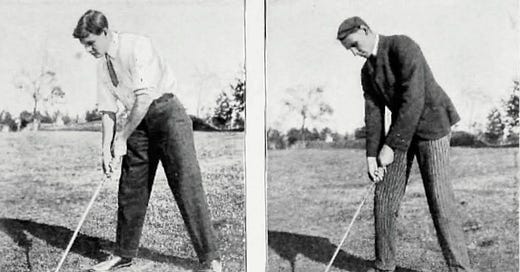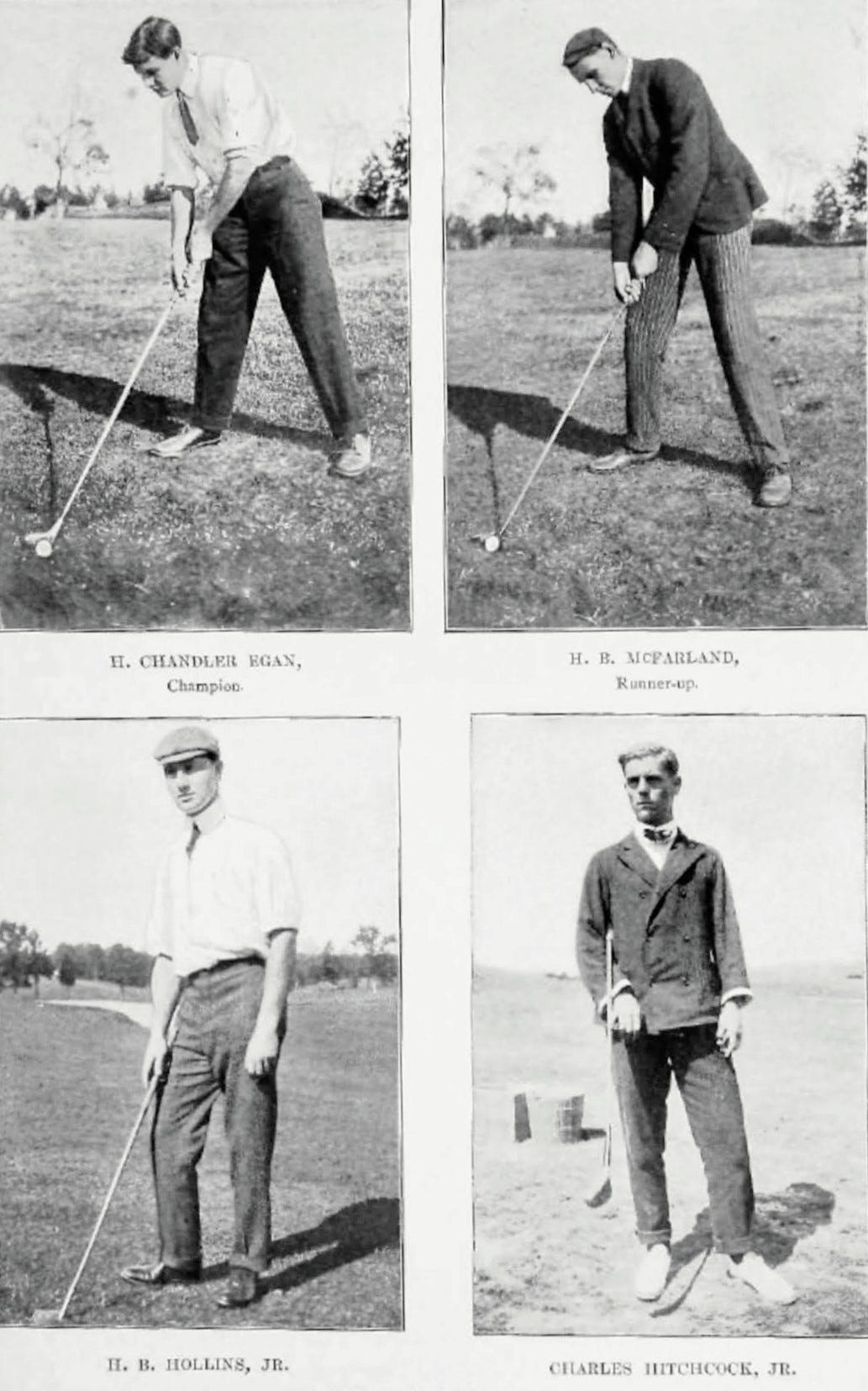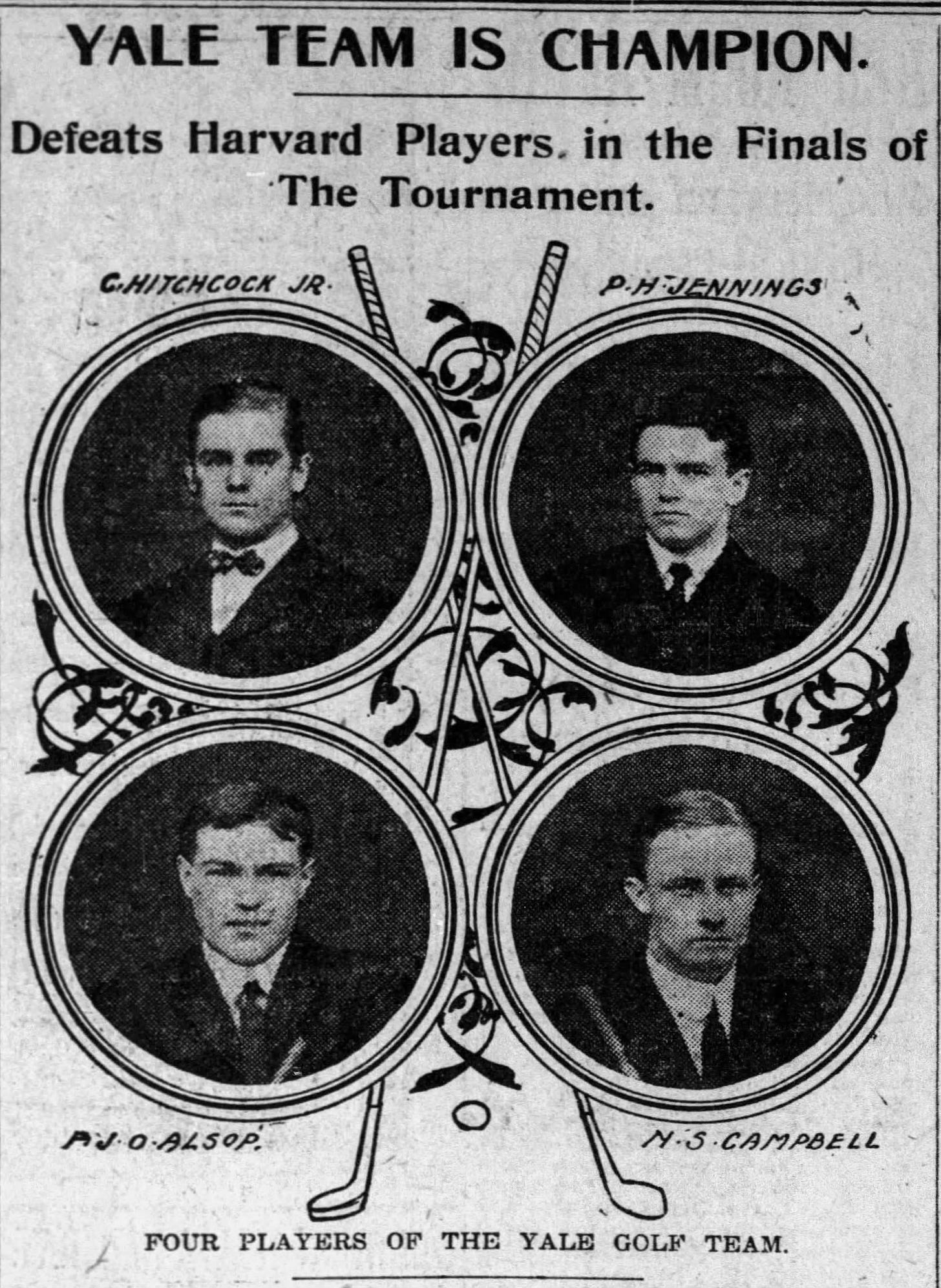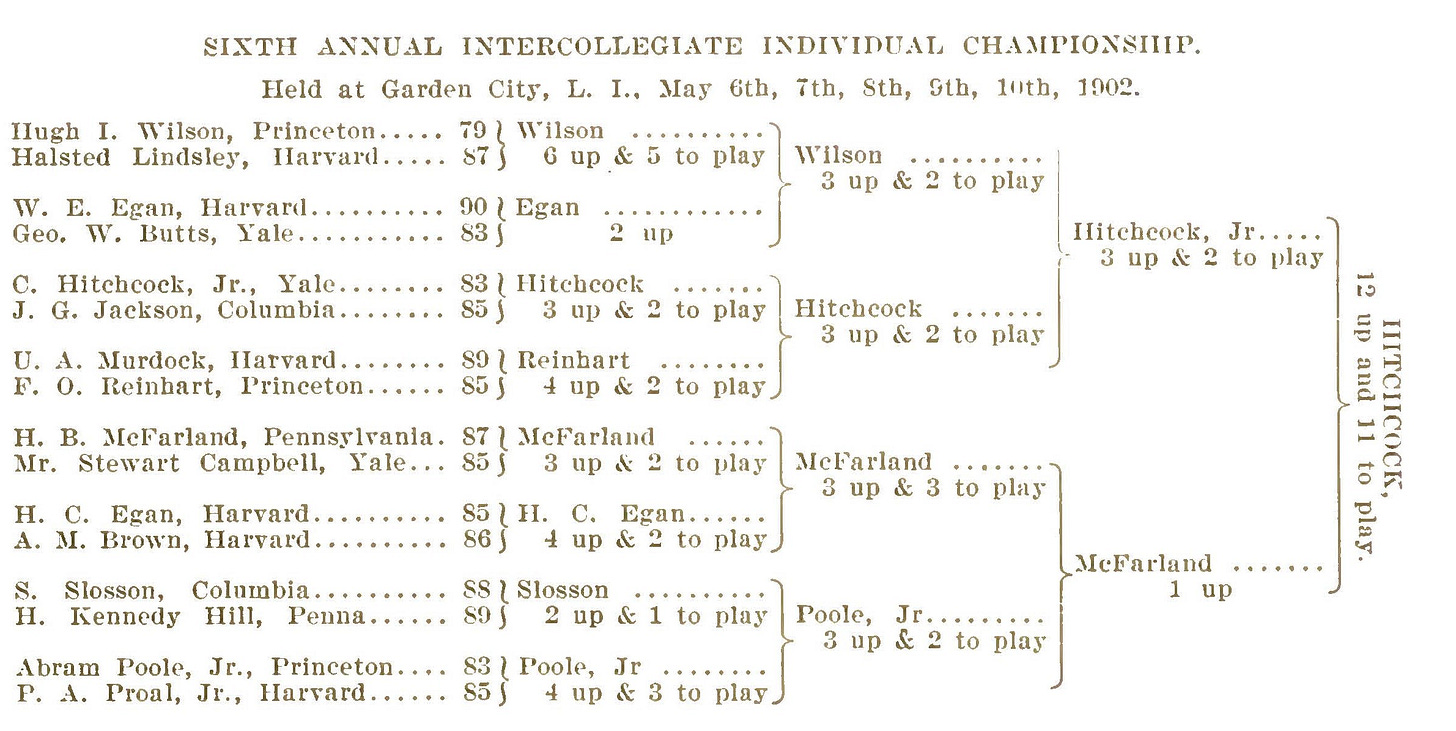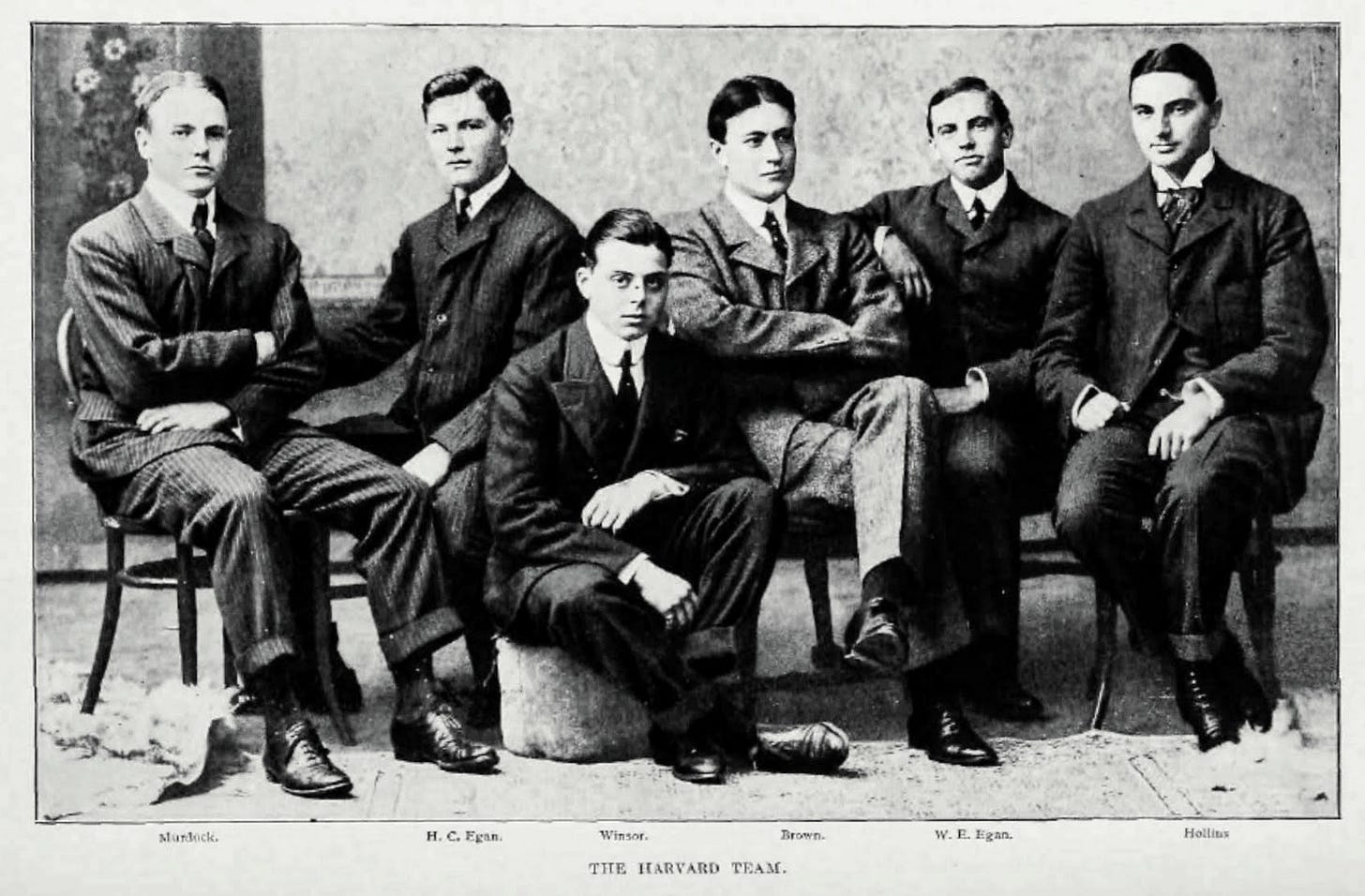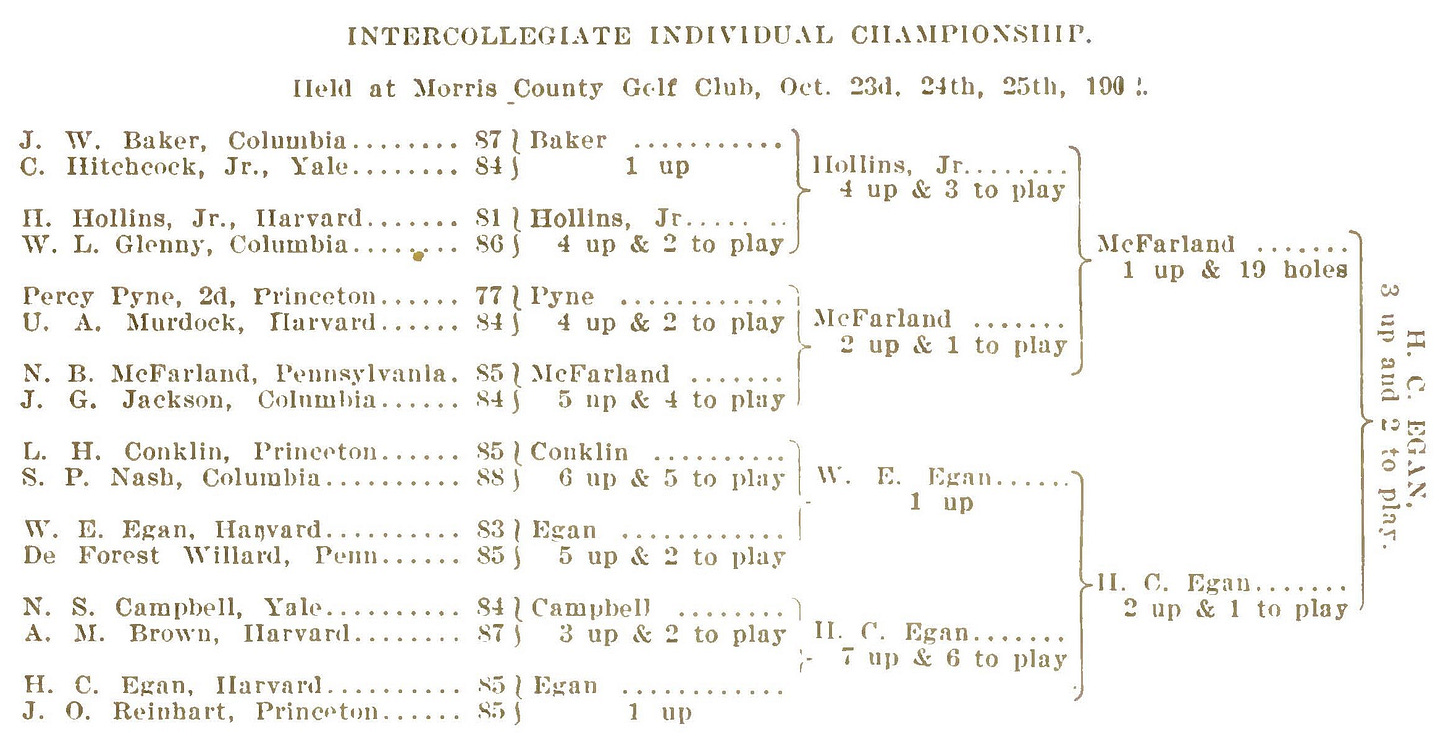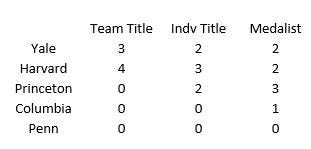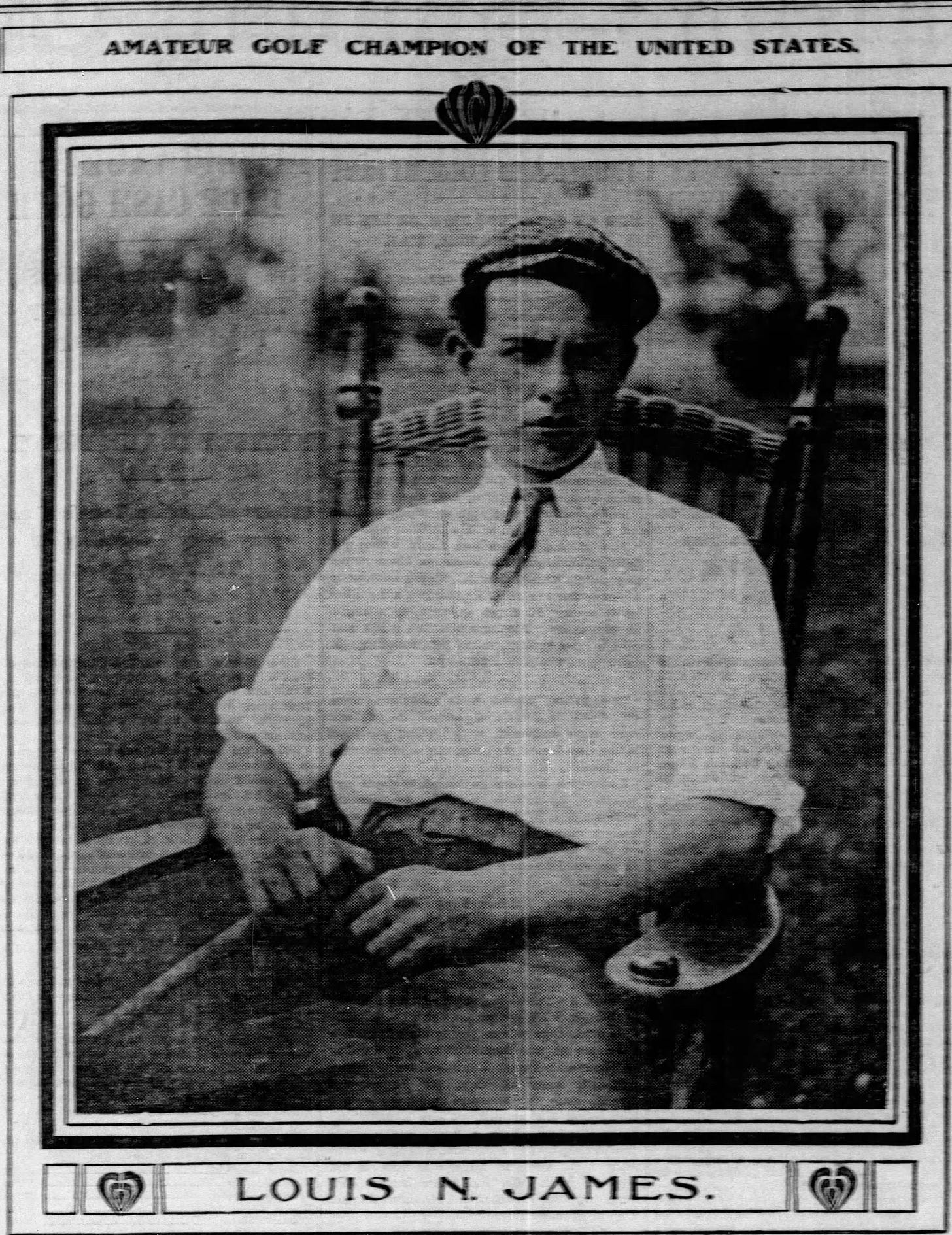This is part of a series on the Men’s Collegiate Championships
IGA Championship Era: 1897-1938
Here we are, switching up the seasons (again) back to the Fall, and just like last time (1898) the decision was made to have two championships in the same year. This time, though, it would stick and remained in the September-October timeframe all the way up to WWI. This was also the last time championships were doubled up in a single year.
One of the interesting storylines tying these two championships together is the fact that two rather important players had academic issues that prevented them from playing in the Spring but returned to play a crucial role in the Fall: Princeton was without the 1899 individual Intercollegiate champion, Percy Pyne 2nd, while Harvard was without HB Hollins Jr, son of the first Metropolitan Golf Association (MGA) president and brother to the infinitely important Merion Hollins - yes that Merion Hollins, the woman who, among so many other accomplishments, helped develop Cypress Point and Pasatiempo, and introduced Bobby Jones to Alister MacKenzie.
Teams were starting to really hit their stride in terms of having players who were excelling on the national stage while still in college, which increased the competition in these championships even when players such as Pyne and Hollins were absent. In other words, college golf is already at the point where it was considered “real competition” with several publications ranking it just below the US Amateur and maybe the Western Amateur in terms of importance.
Intercollegiate Championship #6: May 6-10, 1902
Host: Garden City Links (Garden City, NY)
Returns to Garden City where Harvard won the 1899 championship. Charles Hitchcock [Yale] was the medalist and Percy Pyne 2nd [Princeton] was the individual champion. The course would host the US Open a few months later
Format
Team match play (5 teams, 6 players each, random draw)
Individual stroke play qualifier (18 holes)
Individual match play (16 players, also random draw, 18 hole matches)
Results
Team Champ: Yale (3)
Call it a bounce-back, but don’t call it a come-back; Yale finally captures their third title, just a year/championship too late for the Ardsley Cup. Trophy or no, this was a huge win for Yale who took the long road to the championship. Yale stalwart, captain Charles Hitchcock bounced back from his semifinal defeat against Columbia to post crucial points for Yale, shooting a collegiate championship record low 75 (course record was 73 shot very recently by Walter Travis) in the second round of the 36-hole match.
Medalist: Hugh Wilson [Princeton]
Captain of the Princeton team playing in his final collegiate championship, Hugh Wilson meant more to Princeton than just the scores he submitted. His extensive work with the home Springdale course made him several connections in the golf architecture world, and in 1910 he was tasked with designing what became the historic Merion golf course, which later hosted the Intercollegiate Championship in 1919 and 1926. Wilson’s fantastic work made him one of the integral men of the Philadelphia school of golf architecture which also included AW Tillinghast, George C Thomas, William Flynn, George Crum, and William Fownes.
Individual Champ: Charles Hitchcock Jr [Yale]
Yale’s captain Hitchcock played steady golf through the bracket, first getting revenge on his team Semifinal match loss to Columbia’s JG Jackson, then beating out two very capable Princeton teammates in Frank Reinhart (who he beat in the team preliminary round match) and medalist Hugh Wilson, all by a score of 3&2. Then came the Finals. It’s perhaps unfair that the Penn freshman, Harold McFarland - who was the first representative of his school to make it to the Finals and having run an incredible gauntlet of Yale, Harvard, and Princeton players - was so thoroughly trounced. The 12&11 beatdown was in fact historic in every sense of the word.
Intercollegiate Championship #7: Oct 21-25, 1902
Host: Morris County GC (Morristown, NJ)
The course has an incredible history being the only one managed and organized completely by women at the time of their acceptance into the USGA in 1895, just seven years prior.
Format
Team match play (5 teams, 6 players each, random draw)
Individual stroke play qualifier (18 holes)
Individual match play (16 players, also random draw, 18 hole matches)
Results
Team Champ: Harvard (4)
The draw set up a Harvard/Yale match in the semifinals for the first time. In what proves to be one of the closest matches yet seen, Harvard gets revenge from last year’s title fight with a 7-5.5 point win. Despite the fact the championships up to this point have been primarily Harvard/Yale affairs, the Finals match up against Princeton this year was seen as one that could legitimately go either way. Harvard pulled a bit of gamesmanship by changing up the order their players were originally written on the blackboard, changing some of the match ups before going off the first tee of the 36-hole Finals, which apparently drew (fair) criticism. In the end, though, it seems that the juggernauts were back on top.
One additional interesting note is that unlike other championship teams on campus, the Harvard golfers were not yet awarded the coveted “H” varsity sports letter. It wouldn’t be too much longer until “minor” sports such as golf would get these honors for their championship winning players, but even the champs were denied this status symbol as of now.
Medalist: Percy Pyne 2nd [Princeton]
As stated in the post on the 1899 championship where he won the individual title, Percy Pyne 2nd was an interesting character who persevered through a foot injury to take medalist honors posting an incredible (35-42) 77. It seems that his inability to put much weight on that foot hampered his driving and his short game magic could only hold up for so long, knocking one of the heavy favorites out of the match play portion in the second round.
Individual Champ: (Henry) Chandler Egan [Harvard]
Chandler Egan burst onto the scene with his cousin, Walter Egan, as stars in the “Western” golf area near Chicago. Almost immediately upon walking on the Harvard campus, the two (but especially Chandler) were considered top players destined for great things. There’s too much to say about the Egans and since they still have more accomplishments to come, look for more on their story in the next post. One thing to mention here, though, is that in a weird coincidence Chandler Egan also would go on to design a course that later hosted collegiate championships in 1959, 1978, and 2016; Eugene Country Club resides in an area of Oregon near where Chandler would call home later in life and was partially built based on his design, however the course was completely redesigned by Robert Trent Jones in the 1960s.
Harold McFarland [Penn], who would go on to be voted into the Golf Association of Philadelphia (GAP) hall of fame, becomes the first player to earn runner-up honors twice. McFarland again had to run a match play gauntlet by beating Columbia captain JG Jackson, medalist and former champ Percy Pyne 2nd, and the aforementioned Harvard stalwart HB Hollins Jr. This time the Finals loss was wasn’t so egregious and the fact it was so close with the venerable Chandler Egan speaks volumes.
Championship Award Count
EXTRA HOLES: Louis James, 1902 US Am winner
In the summer between the first and second collegiate championships of 1902, Louis N James became the first teenage US Amateur champion with his win over Yale’s Eben Byers. His family lived at the historic Glen View Club, one of the founding members of the Western Golf Association (WGA) which rivaled the USGA at this time. James entered Princeton the month before the Intercollegiate Championship, but was not allowed to play for the team due to his school status. His only appearance for Princeton in the championship came in 1903 when they made the team Finals before losing to Harvard. Although he would go on to factor in a number of WGA events in the next several years, not much else is widely known about Louis as it seems he would fade into relative golf obscurity.
Thanks for reading!
Up Next:
In the next post we will cover Harvard’s super team of 1904, the gold standard for collegiate teams for decades after. And what’s more fun than a dominant team? A trophy controversy.

